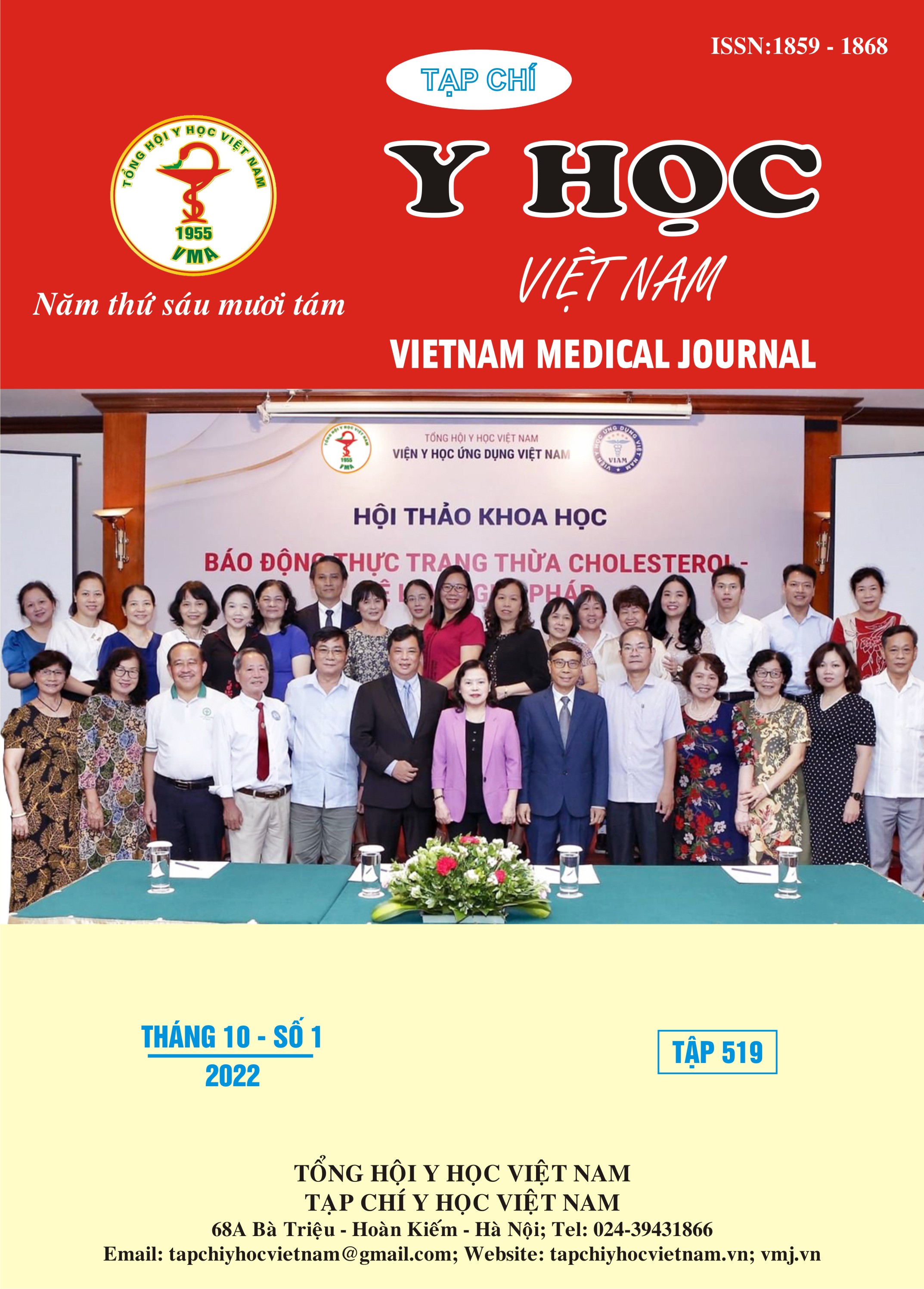CLINICAL AND SUBCLINICAL CHARACTERISTICS OF NEONATAL INTESTINAL PERFORATION AT THE NATIONAL HOSPITAL OF PEDIATRICS
Main Article Content
Abstract
Objective: The aim of this study was to present the clinical and subclinical characteristics of neonatal intestinal perforation at the National Hospital of Pediatrics. Method: The study was conducted on 30 infants diagnosed with bowel perforation during surgery or on pathological results at the National Children's Hospital from May 2021 to March 2022. Data collected from patients included general characteristics and assessment of clinical and laboratory symptoms. Results: Intestinal perforation mainly occurs in the group of premature infants with and low birth weight of 70%, with a male: female ratio 2:1.The main clinical symptoms are abdominal distension, and dirty gastric juice (100%). Abdominal mass, scrotal swelling, and delayed passage of meconium were present in 25%, 5%, and 5%. 60% of children were identified as having pneumoperitoneum on X-ray radiographs. 56.7% of children with ultrasound showed turbid abdominal fluid. Research results show that the main cause of intestinal perforation in neonates is necrotizing enterocolitis 40%. The most common position of intestinal perforation occurred in the ileum (36.67%). Conclusion: The clinical manifestations of neonatal intestinal perforation are often nonspecific, mainly gastrointestinal symptoms including abdominal distension, and dirty gastric juice. Neonates with symptoms suggestive of intestinal perforation should be referred early for abdominal X-ray and ultrasonography. Pneumoperitoneum images on x-ray and ultrasound with free turbid peritoneal fluid are important laboratory symptoms in diagnosis, but the positive rate is still low. Early diagnosis and treatment minimize complications and mortality.
Article Details
Keywords
Intestinal perforation, neonate
References
2. Lee DK, Shim SY, Cho SJ, Park EA, Lee SW. Comparison of gastric and other bowel perforations in preterm infants: a review of 20 years’ experience in a single institution. Korean J Pediatr. 2015;58(8):288-293.
3. Abo-Halawa NAE, Negm MA, Fathy M. The pattern of neonatal gastro-intestinal perforation in upper Egypt. Ann Pediatr Surg. 2020;16(1):17.
4. Almoamin HHA. Review of 31 cases of neonatal gastrointestinal perforations. J Fac Med Baghdad. Published online 2016:5.
5. Alhajjar BK, Alhadidi IS, Al-Sharabi AM. Neonatal gastro-intestinal tract perforation in Mosul city. Ann Coll Med Mosul. 2022;44(1):61-69.
6. Hyginus EO, Jideoffor U, Victor M, N OA. Gastrointestinal Perforation in Neonates: Aetiology and Risk Factors. J Neonatal Surg. 2013;2(3):30.
7. Williams N, Everson NW. Radiological confirmation of intraperitoneal free gas. Ann R Coll Surg Engl. 1997;79(1):8-12.
8. Prgomet S, Lukšić B, Pogorelić Z, et al. Perinatal risk factors in newborns with gastrointestinal perforation. World J Gastrointest Surg. 2017;9(2):46.


